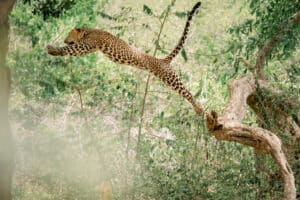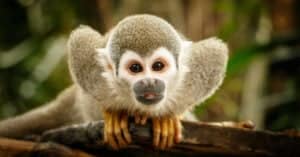Nasalis larvatus, or proboscis monkeys, belong to the Cercopithecidae family of Old World monkeys. Their close relatives include such species as baboons, red colobus, and macaques. They appear predominantly reddish-brown and sport a distinctive, large nose and long tail. You can find them in mangrove and swamp forests, climbing trees, or swimming across rivers. Here is a list of 10 incredible proboscis monkey facts that explore what makes these bizarre-looking monkeys so spectacular.
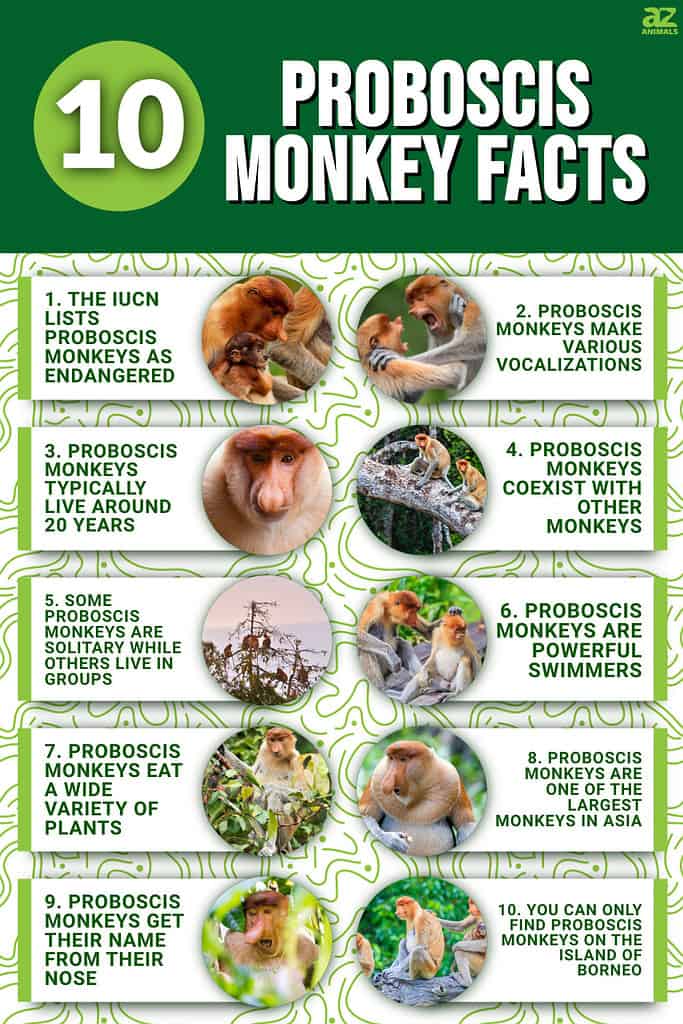
10. You Can Only Find Proboscis Monkeys on the Island of Borneo
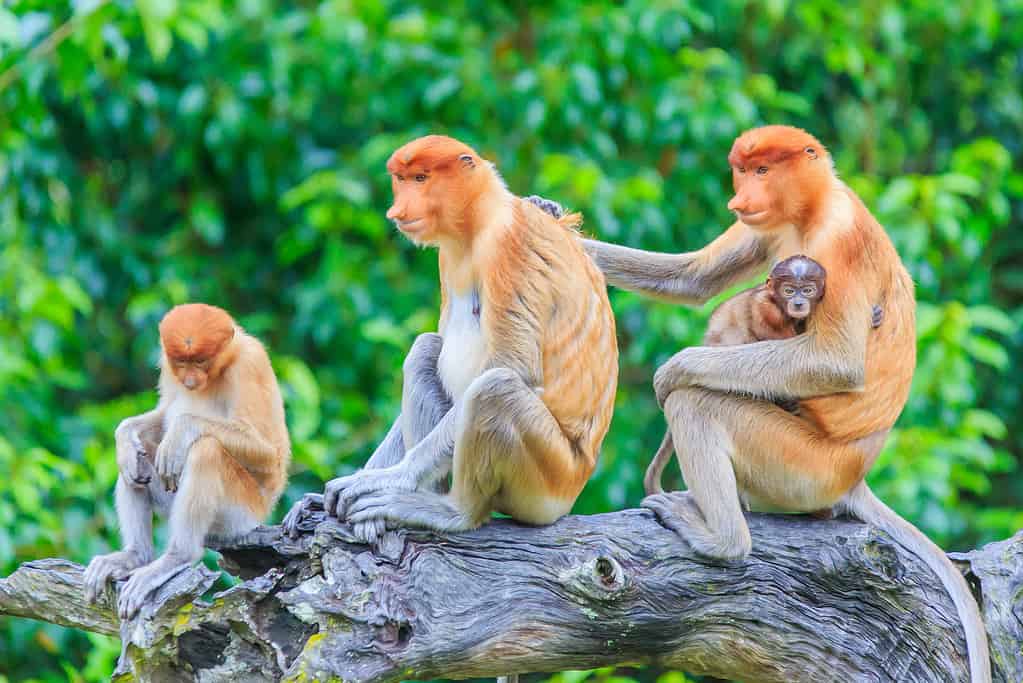
Proboscis monkeys are native to Borneo island.
©Yusnizam/ via Getty Images
For the first entry on our list of proboscis monkey facts, we’ll look at where you can find these strange creatures. Currently, proboscis monkeys only live on the island of Borneo. You can find them in the territories of Brunei, Indonesia, and Malaysia, all of which lay claim to certain regions of the island.
You’re most likely to find proboscis monkeys near coastal and lowland areas such as swamps and river deltas. Given their arboreal nature, they spend most of their time in forests with access to plenty of fresh water. They move about on all fours while navigating tree branches and often leap to cover large distances.
9. Proboscis Monkeys Get Their Name From Their Nose
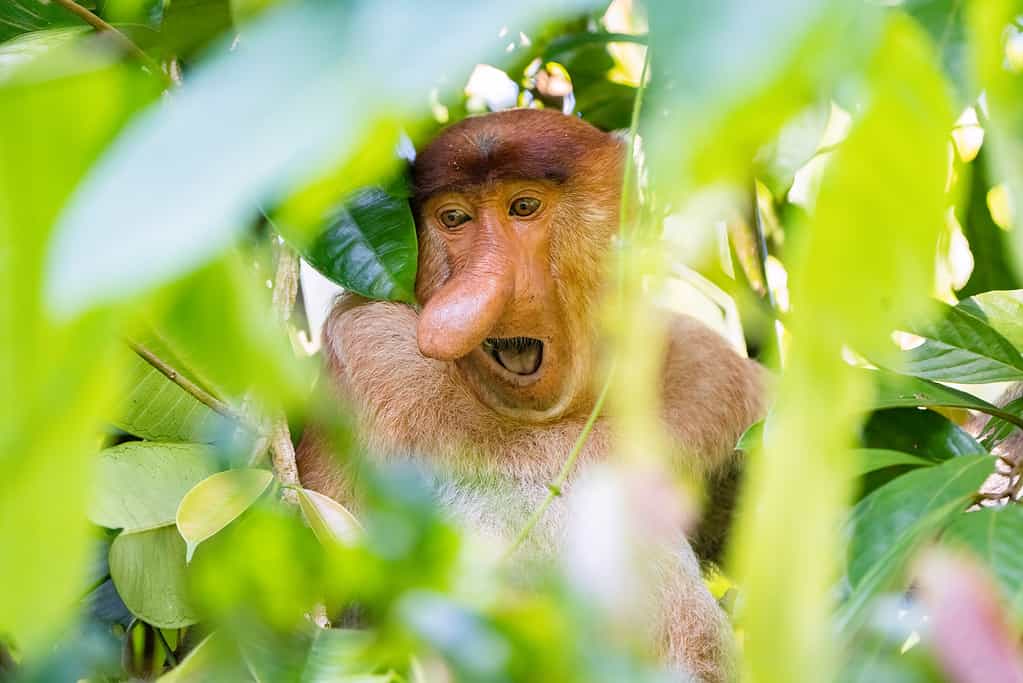
Named after their nose, proboscis monkeys have exceptionally large noses.
©Scott Canning/ via Getty Images
Next, we have arguably our most obvious and important entry on our list of proboscis monkey facts. Also known as long-nosed monkeys, proboscis monkeys get their name from their exceptionally large nose. Their large nose easily ranks as their most defining feature, although the feature varies wildly depending on the sex and age of the specimen.
Amongst the sexes, males are the ones that sport the iconically large nose that typifies the species. At the largest, a male’s nose can grow to nearly 4 inches in length and extend below the mouth. Meanwhile, the females feature noticeably smaller noses, while young monkeys have upturned noses.
8. Proboscis Monkeys Are One of the Largest Monkeys in Asia
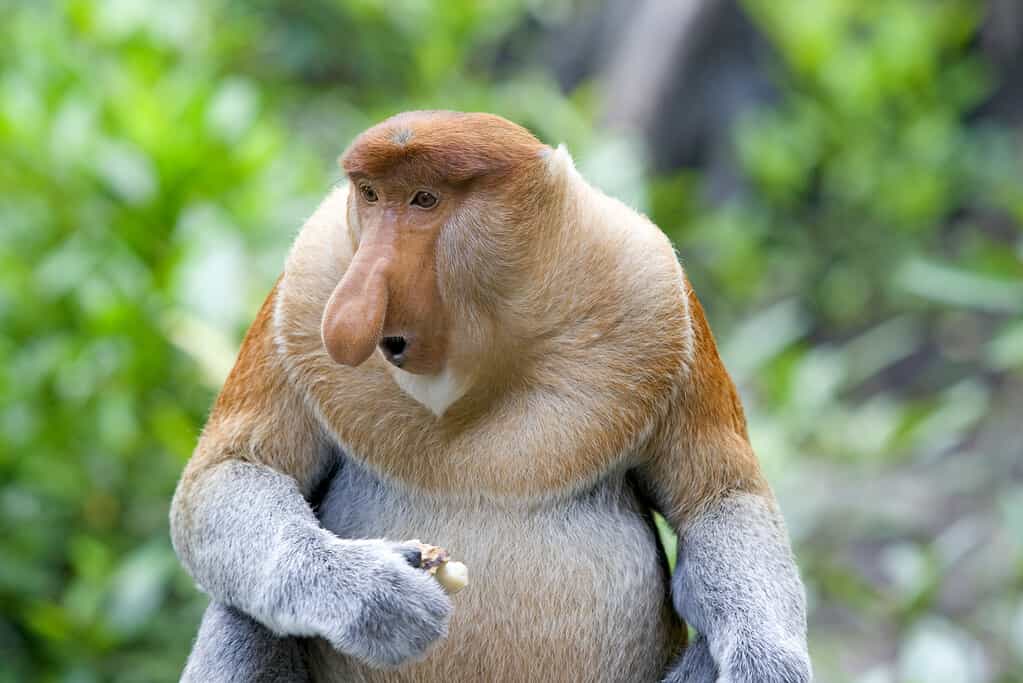
The proboscis monkey ranks as one of the largest monkeys native to Asia.
©kjorgen/ via Getty Images
Primates come in a wide range of sizes, from tiny pygmy marmosets to giant gorillas. When most people think of large primates, they tend to think of hominids such as orangutans, chimpanzees, or gorillas. However, proboscis monkeys deserve to be added to the list of the largest monkeys.
In particular, proboscis monkeys rank as one of the largest monkeys native to Asia. Males average between 26 and 30 inches long and weigh between 35 and 48 pounds. That said, the largest males can weigh up to 66 pounds. Meanwhile, females measure significantly smaller, averaging 21 to 24 inches long and between 15 and 26 pounds.
7. Proboscis Monkeys Eat A Wide Variety of Plants
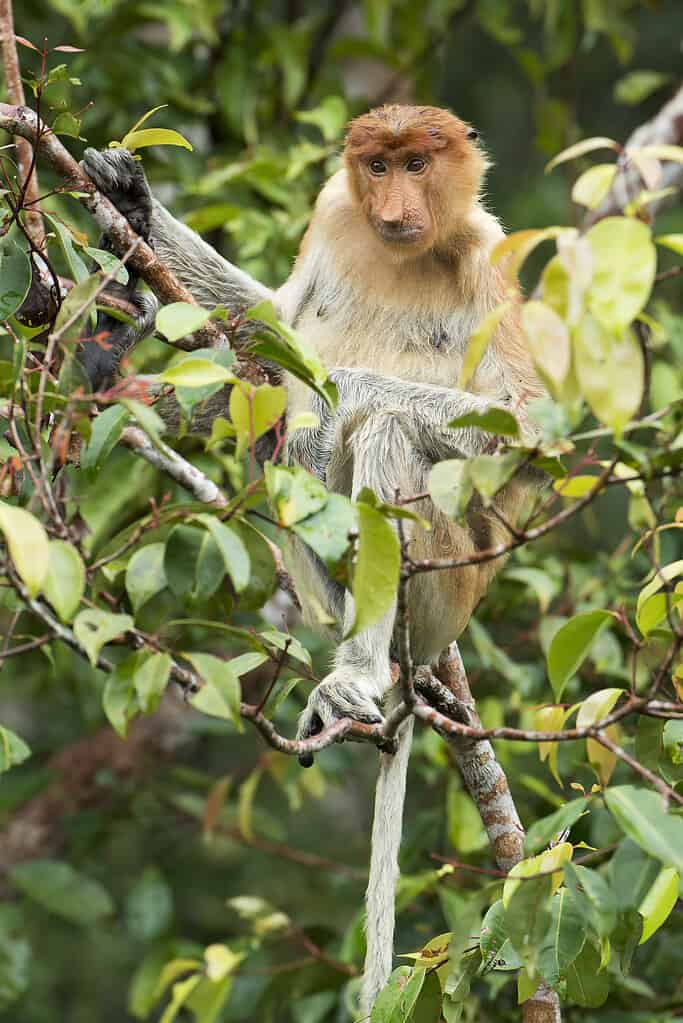
Proboscis monkeys prefer to eat unripe fruits and mature leaves.
©Daniel Jara/ via Getty Images
Like most primates, proboscis monkeys are herbivores that subsist primarily on plant matter. To be precise, they are frugivores and folivores that mostly eat different kinds of fruits and leaves. However, like most mammals, they are willing omnivores and occasionally eat other foods, including seeds and insects.
Overall, proboscis monkeys prefer to eat unripe fruits and mature leaves. Their diet varies according to the season, as they eat mostly fruit in the first half of the year and leaves in the second half. They possess large, protruding stomachs that are well adapted to help them digest their diet of primarily unripe fruit.
6. Proboscis Monkeys Are Powerful Swimmers
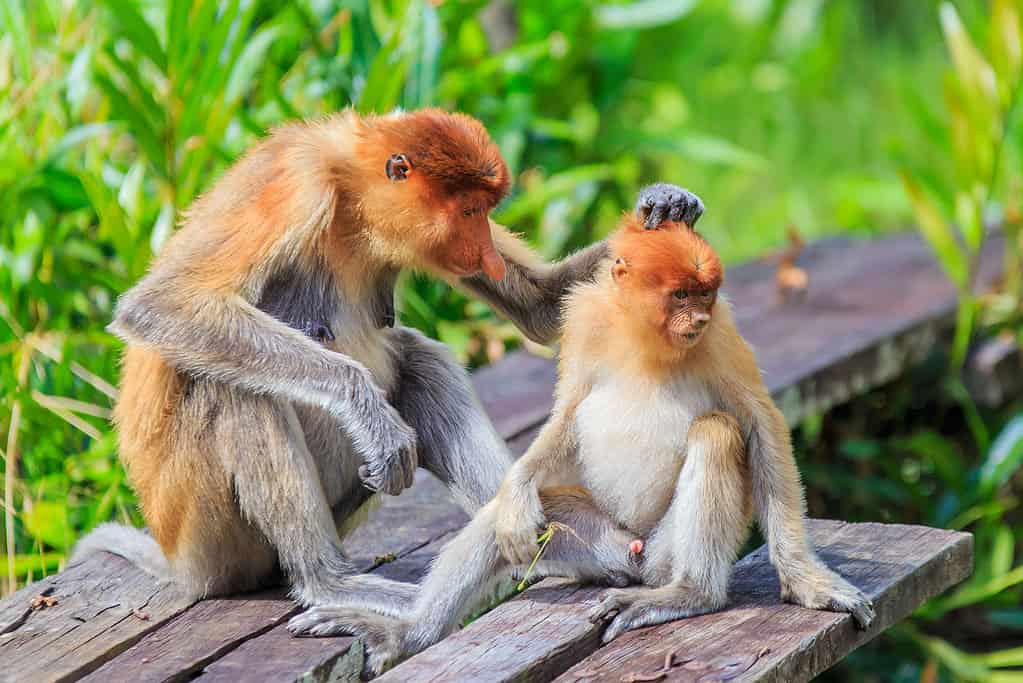
Proboscis monkey loves to sleep by the river’s edge.
©Yusnizam/ via Getty Images
Our next entry on our list of proboscis monkey facts is also one of the most surprising. When people think of monkeys, they don’t think of swimming. On the contrary, we tend to imagine monkeys scrambling through trees or primates prowling across grasslands or mountain slopes. However, proboscis monkeys buck this trend, as they represent one of the best swimmers in the primate world.
When necessary, proboscis monkeys can swim up to 66 feet underwater. They frequently swim across rivers, especially when they need to navigate between foraging and sleeping grounds. Moreover, they will sometimes jump from the branches of trees into bodies of water below.
5. Some Proboscis Monkeys Are Solitary While Others Live in Groups
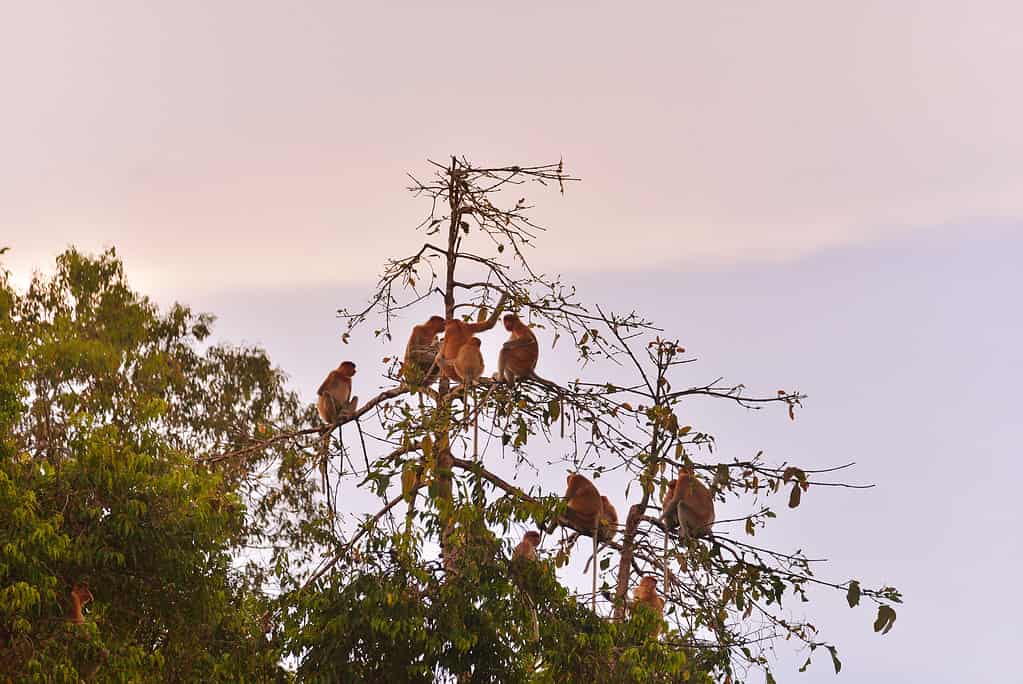
Proboscis monkeys can be either solitary or social animals.
©Joesboy/ via Getty Images
People tend to think of monkeys as social creatures that live in large groups. Gorillas, chimps, and bamboos conform to this stereotype. However, others buck this image, such as orangutans, tarsiers, and lorises. Meanwhile, proboscis monkeys walk a fine line between solitary and social animals.
Generally speaking, proboscis monkeys tend to live in groups consisting of one alpha male, several females, and various mixed young. On the other hand, you can also often find groups made up solely of males. Finally, some proboscis monkeys prefer to live alone, particularly males. Unlike some primates, proboscis monkeys aren’t known to be territorial, and groups will frequently overlap with one another.
4. Proboscis Monkeys Coexist With Other Monkeys
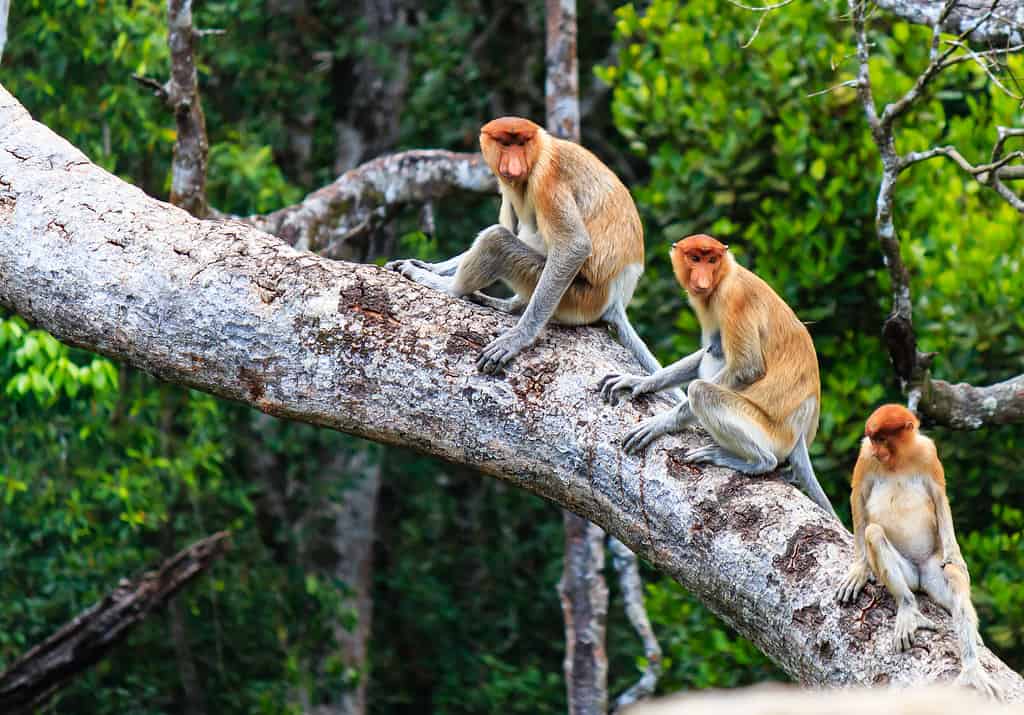
Proboscis monkeys don’t defend their territories aggressively.
©WhitcombeRD/ via Getty Images
As we’ve already mentioned, proboscis monkeys are less territorial than some other primates. They often gather at communal sleeping grounds and will sometimes travel together. They rarely compete with one another and aren’t known to defend their territory aggressively. This overall laissez-faire attitude not only extends to other groups of proboscis monkeys but to other species as well.
In some regions, proboscis monkeys sometimes live in groups containing other species, such as silvery lutungs. Not only will the monkeys live together, but they will also sometimes mate with one another and give birth to hybrid offspring.
3. Proboscis Monkeys Typically Live Around 20 Years
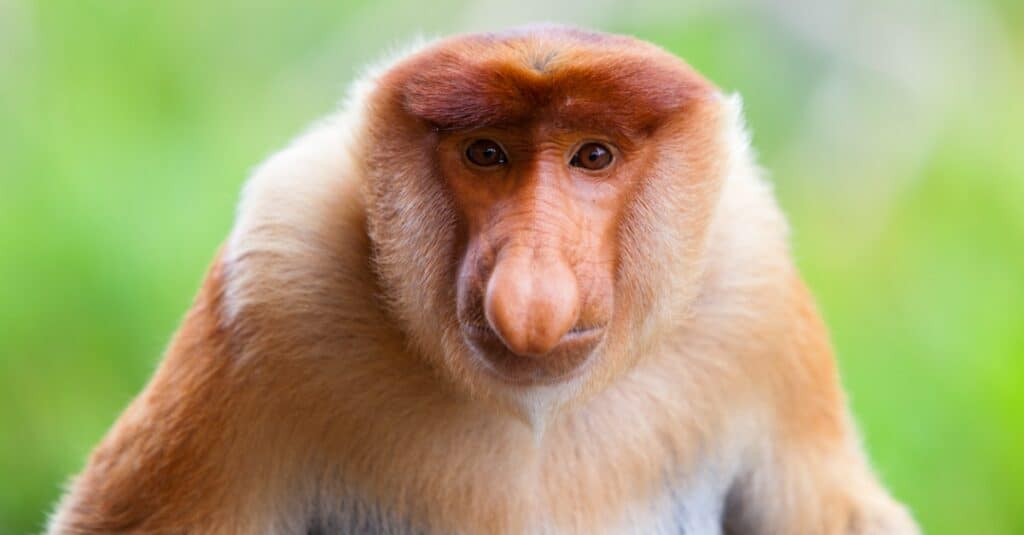
Given their maturity rate, their life cycle follows that of humans, as they spend around three-quarters of their lives as adults.
©David Evison/Shutterstock.com
Female proboscis monkeys typically give birth at night or in the morning. They are dutiful mothers, and females in the same group will often share parenting duties. Young proboscis monkeys subsist on milk for around the first six weeks of life and usually wean around seven months old.
Male proboscis monkeys reach sexual maturity at around 4 or 5 years old, while females become sexually mature at 4. Both sexes live to an average age of around 20 years old. Given their maturity rate, their life cycle follows that of humans, as they spend around three-quarters of their lives as adults.
2. Proboscis Monkeys Make Various Vocalizations
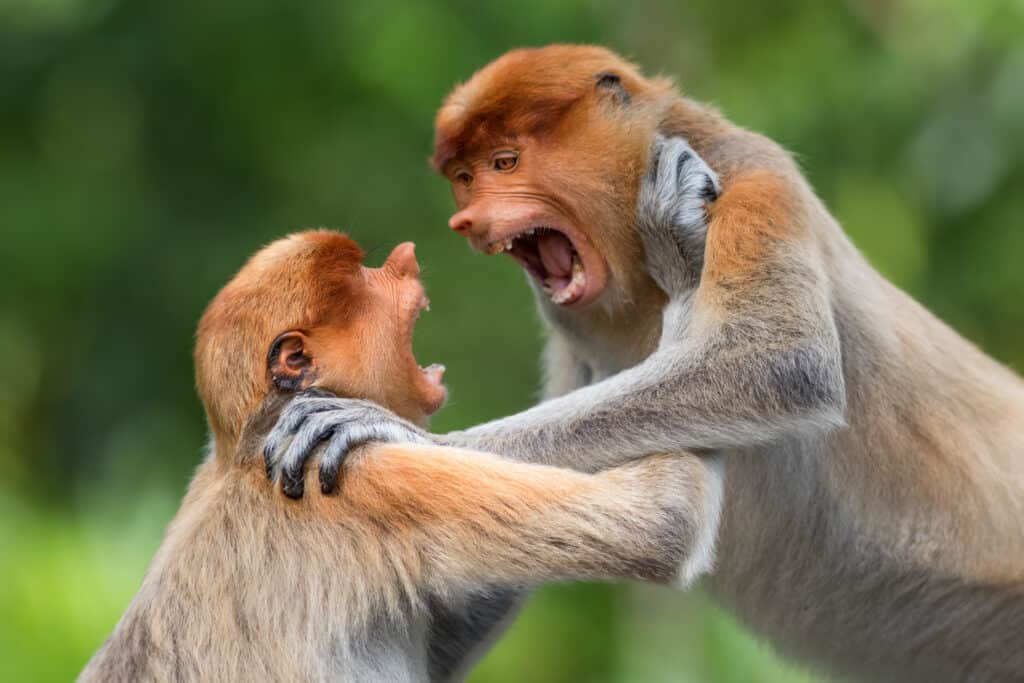
Along with verbal communication, proboscis monkeys also engage in nonverbal communication such as baring their teeth and shaking branches
©Patrik Stanek/Shutterstock.com
Like other primates, proboscis monkeys are well known for their wide range of vocalizations. They make a variety of different honks, calls, roars, and howls that communicate different meanings.
For example, males often honk at one another to communicate their status within a group. Similarly, they produce a distinctive alarm call and make specific vocalizations when speaking with infants. On the other hand, females make characteristic calls when angry. Along with verbal communication, proboscis monkeys also engage in nonverbal communication such as baring their teeth and shaking branches, or leaping around.
1. The IUCN Lists Proboscis Monkeys as Endangered
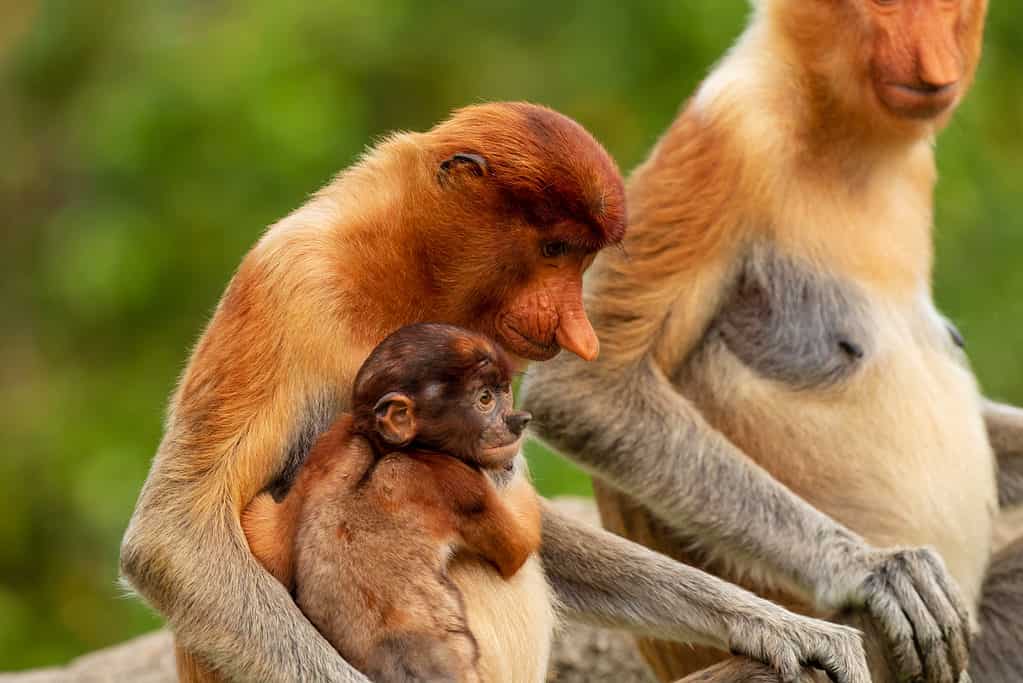
Like so many primates, proboscis monkeys face a number of dangers that threaten their conservation status.
©Richard Whitcombe/Shutterstock.com
The last entry on our list of proboscis monkey facts is also the saddest. Like so many primates, proboscis monkeys face a number of dangers that threaten their conservation status. In addition to natural predators such as crocodiles, clouded leopards, and pythons, they are also frequently hunted by humans both for their meat and for use in traditional Chinese medicine.
Also, proboscis monkeys face threats due to habitat destruction. Given that they only live on one island, their range is growing increasingly limited due to deforestation for agriculture. Researchers estimate that proboscis monkeys have lost nearly 50% of their territory within the last 40 years. As a result, the IUCN lists proboscis monkeys as Endangered.
The photo featured at the top of this post is © David Evison/Shutterstock.com
Thank you for reading! Have some feedback for us? Contact the AZ Animals editorial team.




